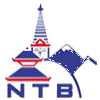Popular New Year Festival of Bhaktapur, Nepal
Biskha Festival
“Biskha Jatra” Also known as “Bisket Jatra” festival is celebrated in Bhaktapur city to celebrate New Year. This can be considered as the sequel of Spring Celebration. In the center of the city, a huge Wooden chariot is assembled which is pulled by two groups of people ( upper and lower part of the city) This gives a glimpse of grand tug-of-war competition. When hundreds of participants uproar as they put effort to take the chariot to their side, you are enticed to join the troop.
Pulling of Chariot Ritual
The festival elaborates deep Philosophies of Newari people (the indigenous people of the valley) in a very beautiful way. Among various rituals, pulling of chariot is the most attractive. The chariot is dedicated to the Wrathful deity Bhairab. Bhairab is another fierceful form of Shiva Himself. In the very front of Chariot is placed “Betal” the vehicle of the Bhairab. Betal is synonymous to disorder, wild, random, shameless, merciless and unpredictable act. These qualities represent our human sub-conscious mind where the storms of thoughts (both good and evil) generates.
On the other hand, Bhairab is the Lord of all. He is the creator and controller. He represents wisdom, and a very tough element that can put the Betal (storms of thoughts) under control.
So, the God Bhairab and Betal go in parallel with Two dimension of human mind – Good and Evil. Both good and evil exist in us. It is the Good one that should suppress the evil. So Bhairab is our conscious mind which is wise to decide and control where as Betal is our sub-conscious mind which is always automatic and out of control.
During the action, the creaking and swaying chariot lumbers around town, pausing for a huge tug of war between the eastern and western sides of the town. This chariot festival is also connected to many other aspects of the festival. So, after the battle, the chariots head to Khalna Tole, where a huge 25m-high lingam (phallic symbol) is erected in the stone yoni (female genital symbol) base.
“Yosi Dyo” or Yosin God.
“Yosin” is a tree trunk. It can be about 25-30 meter long tree collected from a pine forest closed by the city. This is basically a Phallic symbol that enhances in showing how important is coming of spring for the villagers who are mostly farmers. The erection of Yosin in the stone yoni (female genital symbol) is said to be of the same wrathful Deity Bhairab and Bharabi. The symbolic mating of the Bhairab and Bhairabi is also symbolic to the creation that comes after the beginning of spring. The spring in fact brings life back, make the surrounding green and yielding. This is of course the moment of happiness and time to cheer!!!!
The pulling of Yosin is also often justifiably linked to the Serpents which were slain. The legend tells that two serpents would appear from the nose of princess every night and kill her husband every time she gets married. However, she is finally married once again to a brave and wise prince who remains awoken to find two serpents sliding from the princess’s nose. He slays them then and there. So, to mark this moment, the festival is celebrated where two such Yosins are erected to represent those two serpents. The king who was happy with this result started this festival to be celebrated every year.
--Hari Sharan Bhuju











